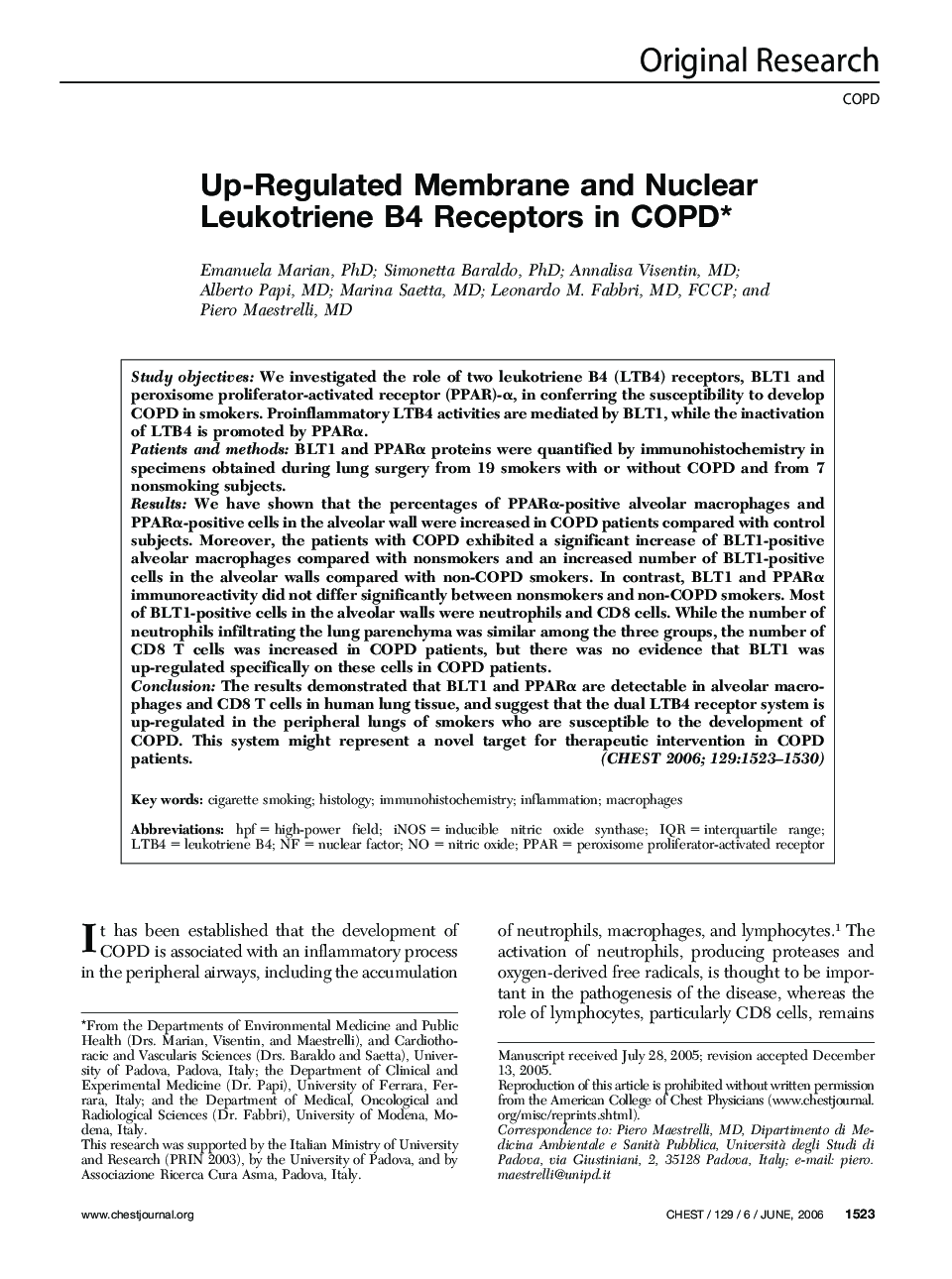| Article ID | Journal | Published Year | Pages | File Type |
|---|---|---|---|---|
| 2905943 | Chest | 2006 | 8 Pages |
Study objectivesWe investigated the role of two leukotriene B4 (LTB4) receptors, BLT1 and peroxisome proliferator-activated receptor (PPAR)-α, in conferring the susceptibility to develop COPD in smokers. Proinflammatory LTB4 activities are mediated by BLT1, while the inactivation of LTB4 is promoted by PPARα.Patients and methodsBLT1 and PPARα proteins were quantified by immunohistochemistry in specimens obtained during lung surgery from 19 smokers with or without COPD and from 7 nonsmoking subjects.ResultsWe have shown that the percentages of PPARα-positive alveolar macrophages and PPARα-positive cells in the alveolar wall were increased in COPD patients compared with control subjects. Moreover, the patients with COPD exhibited a significant increase of BLT1-positive alveolar macrophages compared with nonsmokers and an increased number of BLT1-positive cells in the alveolar walls compared with non-COPD smokers. In contrast, BLT1 and PPARα immunoreactivity did not differ significantly between nonsmokers and non-COPD smokers. Most of BLT1-positive cells in the alveolar walls were neutrophils and CD8 cells. While the number of neutrophils infiltrating the lung parenchyma was similar among the three groups, the number of CD8 T cells was increased in COPD patients, but there was no evidence that BLT1 was up-regulated specifically on these cells in COPD patients.ConclusionThe results demonstrated that BLT1 and PPARα are detectable in alveolar macrophages and CD8 T cells in human lung tissue, and suggest that the dual LTB4 receptor system is up-regulated in the peripheral lungs of smokers who are susceptible to the development of COPD. This system might represent a novel target for therapeutic intervention in COPD patients.
